Explore Shimla: Travel Guide to Top Places to Visit, Best Things to Do, and Must-See Attractions

Shimla, situated at an elevation of 2,250 meters (7,380 ft), is the capital town of Himachal Pradesh. Also spelled “Simla,” this enchanting "Queen of Hills," nestled in the foothills of the majestic Himalayas, is one of North India's most popular tourist destinations. Known for its colonial architecture, pleasant climate, and breathtaking landscapes, Shimla offers a perfect blend of natural beauty and historical charm. Whether you're a nature lover, history enthusiast, or someone seeking a peaceful getaway, Shimla has something for everyone. In this comprehensive travel guide, we'll take you through the top places to visit, the best things to do, and must-see attractions in Shimla. We'll also explore unique experiences like Shimla Heritage walks, Nature Walks, and Culinary tours provided by Summit Safari India, a destination management company.
A Glimpse into Shimla’s Colonial Past: From Shyamla to Simla to Shimla
Shimla, originally known as Shyamla, has a fascinating history that dates back to the early 19th century. By 1806, this small village nestled in the foothills of the Himalayas was virtually unknown until the British community discovered it. As the British settled in the region, the name gradually evolved from Shyamla to Simla, and post-independence in 1947, the name was finally standardized as Shimla, the name we use today.

During the British era, Shimla, became an essential hub for the colonial administration. Known as the "Summer Capital of British India," Shimla was the preferred escape for British officials during the sweltering summer months. It served not only as a retreat but also as the Headquarters of the Commander-in-Chief of the British Indian Army and the summer capital of the Punjab Government. The legacy of the British era is still vividly alive in Shimla, with numerous pre-independence structures dotting the landscape.
Read more about Shimla's rich history in our blog post, 'Shimla: A Journey Through the Colonial Heritage of India's Beloved Hill Station.'

The Viceregal Lodge, Auckland House, Gorton Castle, Peterhoff, Command House, Town Hall, Christ Church, Municipal Administration Building, and Gaiety Theater are among Shimla's most notable colonial-era landmarks. Remarkably, most of these heritage buildings have been meticulously preserved, maintaining their original architectural grandeur. The Viceregal Lodge, now home to the Indian Institute of Advanced Study, the Gaiety Theater, still actively used by local dramatic clubs, and Wildflower Hall, which has been transformed into a luxurious hotel, stand out as iconic examples of Shimla's rich historical legacy.
Kalka-Shimla Toy Train: UNESCO Heritage Journey through the Himalayan Foothills
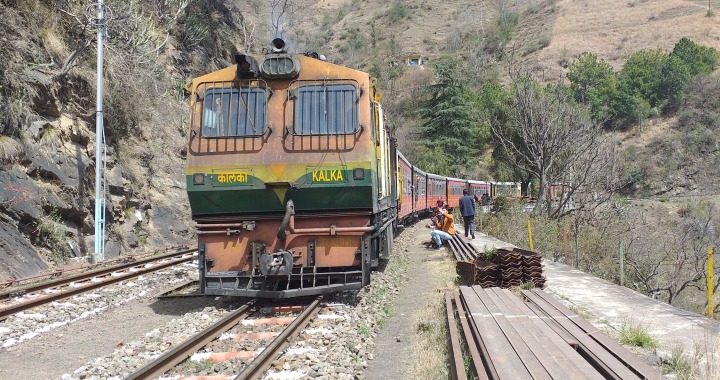
The Kalka-Shimla Toy Train, a railway line, 96.54 km (59.99 miles), was opened for trains on November 9, 1903, and added to Shimla’s accessibility and popularity. The railway route from Kalka to Shimla, with more than 806 bridges and 103 tunnels, was touted as an engineering feat and came to be known as the "British Jewel of the Orient". In July 2008, it became part of the UNESCO World Heritage Site, Mountain Railways of India. The entire route from Kalka at 656 meters (2,152 ft) to Shimla at 2,076 meters (6,811 ft) offers breathtaking views of the Himalayan foothills, making it one of the longest and most scenic narrow-gauge railway routes still in operation in India.
Read more about Kalka Shimla Toy Train in our blog post "Exploring the History of the Kalka-Shimla Railway: A UNESCO Heritage Toy Train Journey"
Shimla at Present: Top Places to Visit, Best Things to Do, and Must-See Attractions

Shimla has evolved into a relaxed tourist destination and a popular hill station of India and is lovingly called the "Queen of Hills." This charming hill town offers a pleasant retreat with its moderate summers and snowy winters. It serves as an ideal escape from the heat and the hustle of the plains, presenting a serene blend of nature and culture. Shimla is a heaven of peace and natural beauty. Enjoy the crisp mountain air and clear blue skies as you explore serene walks through oak, cedar, and rhododendron forests. The surrounding countryside features charming terrace fields, fruit orchards, and stunning panoramic views of the snow-capped Himalayan ranges. The warm-hearted, straightforward locals add to the town's welcoming atmosphere.
Top Places to Visit and Must-See Attractions in Shimla
Colonial Heritage Landmarks in Shimla
Shimla’s colonial heritage is showcased in its well-preserved architecture, which reflects the grandeur of a bygone era. Some of the most iconic buildings include:
1. Viceregal Lodge Shimla

A visit to the Viceregal Lodge is a must for anyone exploring Shimla, offering a glimpse into the rich historical legacy of the region. Originally known as the Viceroy’s House in Shimla and now recognized as the Indian Institute of Advanced Study, this historic building was constructed between 1844 and 1888 during the viceroyalty of Lord Dufferin. Designed by architect Henry Irwin in the Scottish Baronial architectural style, it served as the office and residence for 13 British Viceroys, from Lord Dufferin to Lord Mountbatten. During its time as the summer capital of India (established in 1864), the Viceregal Lodge was the administrative center from which the British Viceroys governed the Indian subcontinent. The building is a significant historical landmark in Shimla, having hosted crucial pre-independence discussions and negotiations. During Lord Wavell's tenure in 1945, the building hosted the pivotal "Shimla Conference," where key discussions took place. It was here that the draft for the partition of British India into the two nations of India and Pakistan was formulated. The building also served as a venue for important pre-independence talks, with notable national leaders such as Mahatma Gandhi, Jawaharlal Nehru, Maulana Azad, and Muhammad Ali Jinnah (from the Muslim League) visiting for critical negotiations.
2. Christ Church, Shimla

Perched on the Ridge of Shimla, Christ Church stands as an iconic landmark, synonymous with the town itself. No depiction of Shimla is complete without this historic church, which is the second oldest in North India. Designed by Colonel J.T. Boileau in the Neo-Gothic architectural style, the church's foundation stone was laid on September 9, 1844, by Daniel Wilson, Bishop of Calcutta, and the building was completed in 1857. The church’s beauty is accentuated by its stained-glass windows, which symbolize faith, hope, charity, patience, and humanity. Notably, the pipe organ, installed in September 1899, is one of the largest in the country. This remarkable "king of instruments" was constructed by Messrs Morgan and Smith of Brighton, England, at a cost of Rs 23,000. The organ was tuned by September 23, 1899, and underwent extensive repairs in 1932.
3. Gaiety Theatre Shimla

The architect Henry Irwin, who built the Viceregal Lodge, designed the Gaiety Theatre building in Shimla and it started as the Theatre in 1887. The first play held inside the theatre was a comedy play, known as "Time Will Tell." Shimla became the home of amateur theatre and the Gaiety Theatre produced the best of the plays performed in London. Rudyard Kipling and Lord Elgin (Viceroy of India) have also performed and acted in the Gaiety Theatre. The theatre, still in use today, hosts various performances and events, maintaining its historical charm.
4. The Mall Road Shimla

The Mall is the bustling epicentre of Shimla, beloved by both tourists and locals. As the main shopping street, it remains lively throughout the day and evening. The Mall is lined with a variety of establishments, including shops, restaurants, coffee shops, bars, banks, ATMs, post offices, and historic landmarks such as the Gaiety Theatre, Town Hall, and the Scandal Point of Shimla. Visitors stroll leisurely along the Mall, which serves as a popular gathering spot and social hub. The Mall meets the Ridge at the famous Scandal Point, adding to its charm. With its array of historic British-era buildings, the Mall retains the quaint, small-town ambiance reminiscent of England. Below the Mall Road, the Lower Bazaar offers another vibrant local market, running parallel to the main street.
5. Scandal Point: Shimla’s Historic Meeting Spot
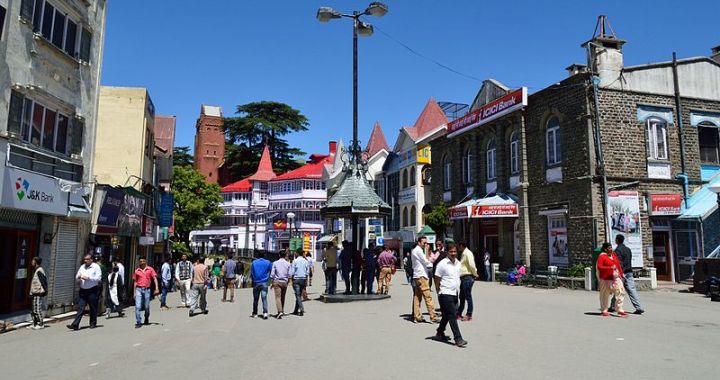
Scandal Point is a notable landmark in Shimla where the Mall Road and the Ridge meet, marked today by a lamp post in the middle of the road. The name "Scandal Point" originates from a famous local tale involving a British lady who allegedly eloped with Maharaja Bhupinder Singh of Patiala from this very spot. After her return to society, the place became known as Scandal Point. According to legend, the lady was the daughter of a high-ranking British Army officer, which led Lord Kitchener, then Commander-in-Chief of the British Army (1902-1909), to prohibit Maharaja Bhupinder Singh from entering Shimla. Enraged by this, the Maharaja vowed to create a new hill station at a higher elevation, which he subsequently established as Chail, his own summer retreat. Though this story may be more than a century old, Scandal Point remains a central and lively gathering place in Shimla, where locals and visitors alike come to chat and catch up. Each evening, the area is patrolled by Himachal Pradesh police.
6. The Ridge: Shimla’s Scenic and Historical Hub

The Ridge of Shimla, an expansive, open space located above Mall Road, offers breathtaking views of the Great Himalayan Mountain ranges. It is surrounded by notable landmarks, including the Neo-Gothic Christ Church and the Tudor-style Library building. The Ridge is a significant hub for Shimla’s cultural events and festivals, serving as a venue for local fairs, concerts, and celebrations. It is a popular spot for tourists and locals to gather and enjoy the panoramic vistas, making it a quintessential part of the Shimla experience.
7. Annandale Ground and Army Heritage Museum

Annandale Ground, a flat, semi-circular field about a half-hour drive from the Ridge, has been a focal point of Shimla's community life since the British Raj. Managed by the Indian Army, the ground serves various purposes, including sporting events and military parades. Adjacent to Annandale Ground, the Army Heritage Museum offers a fascinating glimpse into India's military history. Visitors can explore exhibits showcasing the Indian Army's evolution, equipment, and notable achievements. The museum provides a deeper understanding of the nation's defense forces and their significant role in shaping India's history.
Exploring Shimla’s Spiritual Heart: Must-See Temples and Religious Sights
Shimla is not only known for its colonial heritage but also for its spiritual sites. Visitors can explore several temples and religious landmarks that reflect the region's rich cultural and spiritual heritage.
1. Jakhoo Temple: A Sacred Journey to Shimla’s Highest Peak

Jakhoo Temple, dedicated to Lord Hanuman, is an ancient site located on Jakhoo Hill, the highest peak in Shimla. The temple is believed to be the spot where Lord Hanuman rested while searching for the Sanjeevani herb to revive Lakshman during the battle of Lanka in the Ramayana. The temple features a 108-foot-tall statue of Lord Hanuman, which is one of the tallest in the world. Visitors can reach the temple by trekking through scenic paths or by taking a cable car ride. The temple offers panoramic views of Shimla and the surrounding Himalayan ranges. Watch our youtube video to explore the Majestic 108-foot-tall statue of Lord Hanuman
2. Sankat Mochan Temple

Sankat Mochan Temple, located on the Shimla-Kalka highway, is dedicated to Lord Hanuman. The temple is known for its spiritual significance and serene atmosphere. Devotees visit the temple to seek blessings and relief from troubles, as the name "Sankat Mochan" translates to "reliever of troubles." The temple complex also includes shrines dedicated to Lord Rama, Lord Shiva, and other deities. The peaceful surroundings and beautiful views make it a popular spot for meditation and reflection.
3. Tara Devi Temple

Tara Devi Temple, located on Tara Devi Hill, is dedicated to the goddess Tara. The temple is believed to have been established over 250 years ago by the Sen dynasty rulers. It offers breathtaking panoramic views of the surrounding Himalayas and Shimla's lush landscapes. The temple is a popular pilgrimage site, attracting devotees and tourists alike. The serene environment and spiritual ambiance provide a perfect setting for prayer and contemplation.
4. Shimla Kali Bari Temple

Shimla Kali Bari Temple, situated on a hilltop, is dedicated to the goddess Kali. Constructed in the early 19th century, the temple is a significant religious site in Shimla. It provides stunning views of the surrounding hills and the city below. The temple is especially crowded during the festival of Navratri, when devotees come to offer prayers and seek blessings. The vibrant atmosphere and spiritual energy make it a must-visit site for those exploring Shimla's religious heritage.
Best Places to Visit Around Shimla
Shimla's surrounding areas offer equally captivating attractions and scenic beauty. Here are some of the best places to visit around Shimla:
1. Kufri

Kufri, just a short drive from Shimla, is renowned for its snow-capped peaks and exciting winter sports. Visitors can enjoy skiing, tobogganing, horse riding, and breathtaking views from Mahasu Peak. Kufri is also home to the Himalayan Nature Park, which houses various species of flora and fauna native to the region.
2. Mashobra & Craignano

Mashobra and Craignano offer serene escapes into nature. Mashobra is known for its lush greenery and picturesque landscapes, while Craignano features charming colonial architecture and beautiful gardens. Both destinations provide opportunities for hiking, bird watching, and enjoying the tranquility of the Himalayan foothills.
3. Naldehra Golf Course
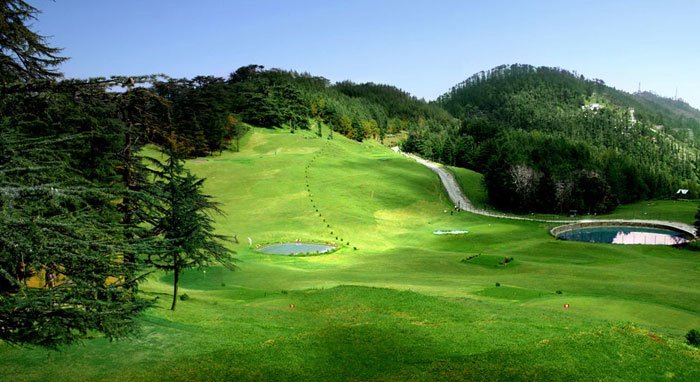
Naldehra Golf Course, one of the oldest in India, offers an 18-hole course set amidst lush green landscapes. The adjacent picnic area is perfect for relaxing and enjoying a meal with family or friends. Naldehra's scenic beauty and peaceful environment make it a popular destination for nature lovers and golf enthusiasts.
4.Chail

Chail, a serene hill station near Shimla, is renowned for its tranquil ambiance and scenic vistas. The Chail Palace, once the summer retreat of the Maharaja of Patiala, is a striking example of colonial architecture and now serves as a luxury hotel, offering guests a glimpse into royal history. Chail is also home to Kali Ka Tibba, a revered temple situated on a hilltop, offering panoramic views of the surrounding landscape. The town boasts the highest cricket ground in the world, a unique attraction for sports enthusiasts. With its lush pine forests, peaceful environment, and historical sites, Chail is an ideal destination for relaxation and exploration.
5. Narkanda
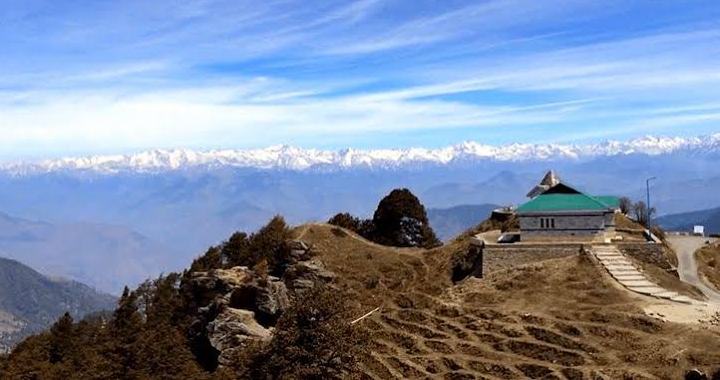
Narkanda, a charming hill station located 60 kilometers from Shimla, offers stunning views of the snow-capped Himalayas and lush green valleys. Known for its skiing slopes and winter sports, it is a popular destination for adventure enthusiasts. Narkanda’s serene environment is perfect for nature walks and offers panoramic views of the surrounding peaks. The town is also home to the ancient Hatu Peak temple, a significant religious site with breathtaking vistas. With its pleasant weather, scenic beauty, and recreational opportunities, Narkanda is an ideal getaway for both relaxation and adventure.
6.Tattapani

A picturesque town located along the Sutlej River, is renowned for its rejuvenating hot springs and scenic beauty. The Hotel Hot Spring in Tattapani offers a unique experience with its natural sulphur pools, providing therapeutic benefits for visitors. The hot sulphur pools are famed for their healing properties and are a major attraction for those seeking relaxation and wellness. Tattapani also offers a range of water sports activities, including river rafting and boating, catering to adventure enthusiasts. The combination of natural hot springs, thrilling water sports, and stunning landscapes makes Tattapani a refreshing and exciting destination. Watch our youtube video TattaPani Shimla hot Water Spring and Water Sports to know more about Tattapani
7. Shimla Water Catchment Area
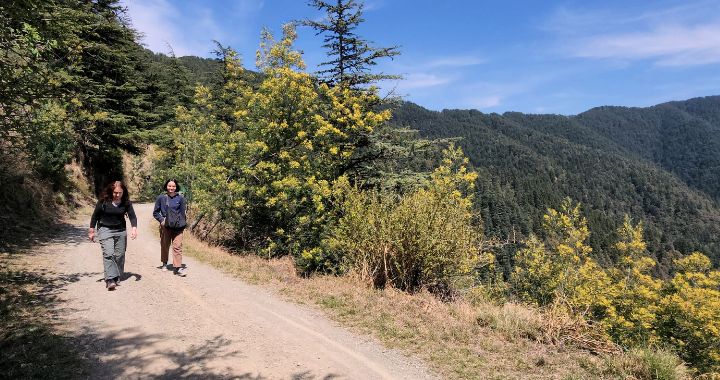
Nestled in the serene hills of Himachal Pradesh, the Shimla Water Catchment Area is a hidden gem that offers a unique blend of natural beauty and ecological significance. This pristine forest area, spread over 1,000 hectares, is one of Shimla's most vital water sources and a haven for nature lovers and wildlife enthusiasts. Watch our youtube video Shimla Water Catchment Wildlife Sanctuary to explore the Shimla Water Catchment Area, along with Wildlife Sanctuary and trek details.
The Shimla Water Catchment Area is renowned for its rich biodiversity. The dense forests are predominantly composed of Himalayan Cedar (Deodar), Oaks, and Rhododendrons. This lush greenery not only contributes to the area's stunning beauty but also plays a crucial role in water conservation and maintaining the region's ecological balance.
Best Things and Activities To Do In Shimla
Shimla offers a range of captivating activities that cater to diverse interests. Here are some of the best things to do:
1. Heritage Walks

Immerse yourself in Shimla's rich history with guided heritage walks organized by Summit Safari India. These tours take you through the town's colonial landmarks, including the Viceregal Lodge, Christ Church, and the Gaiety Theatre. The walks provide insightful stories and historical context, making for a memorable experience.
2. Day Treks
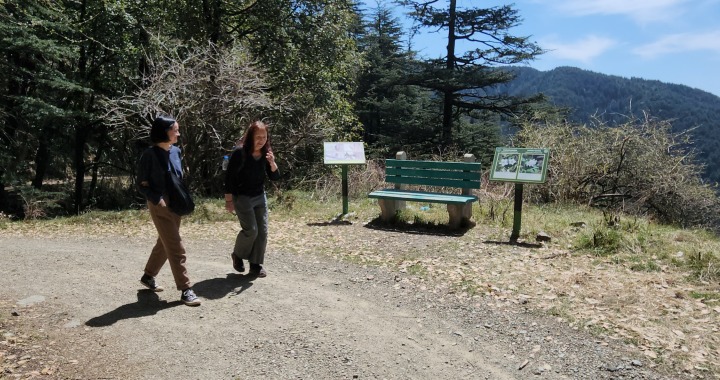
Explore the scenic beauty surrounding Shimla with day treks to nearby peaks and trails. Popular trekking routes include the hike to Jakhoo Temple or a trek through pine forests to Shali Peak. These treks offer stunning vistas and a chance to connect with nature.
3. Cooking and Culinary Tours

Experience Shimla’s local flavors with cooking and culinary tours organized by Summit Safari India. These tours include hands-on cooking classes, market visits, and opportunities to taste traditional Himachali dishes. Learn about the region's culinary heritage and enjoy a delicious meal prepared with fresh, local ingredients.
Climate and Best Time To Visit In Shimla
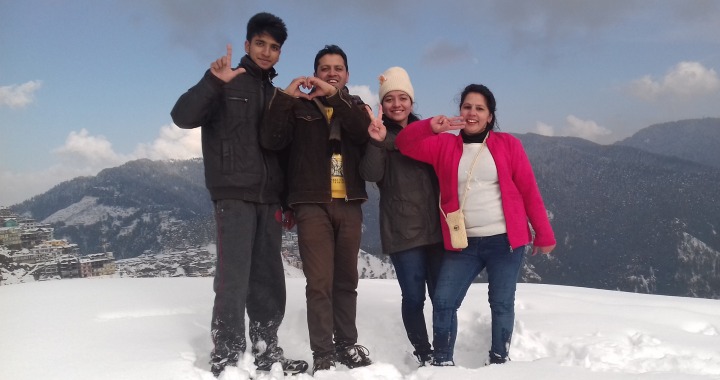
Shimla, nestled on the slopes of the lower Himalayas and close to the Central and Greater Himalayas. Climate and Best time to visit Shimla is from March to Junne end and Mid-September till December offering favourable weather for various activities.
Shimla enjoys a cool and pleasant climate due to its elevated position. Summers in Shimla are mild, with temperatures rarely exceeding 28°C, and the monsoon season spans from July to August, characterized by intermittent rain every 4-5 days followed by clear weather. Winters, influenced by chilly winds from the upper Himalayas, bring crisp, cold evenings and pleasantly warm days. Snowfall typically occurs from late December to late February, transforming Shimla into a winter wonderland.
How to Reach Shimla

By Road:
Shimla, the capital of Himachal Pradesh, is well-connected by road to major towns and cities in North India. It is 370 km from Delhi, 120 km from Chandigarh, 90 km from Kalka, 240 km from Dharamshala, and 260 km from Manali. Shimla also serves as a gateway to Leh-Ladakh via Manali and is accessible to Kinnaur Valley (Kalpa, 240 km) and Spiti Valley (Kaza, 430 km).
By Train:
Shimla is linked to the rail network via a narrow gauge line from Kalka to Shimla Toy Train, which is connected to major cities like Mumbai, Kolkata, and Delhi. The Shatabdi Express, offering first-class air-conditioned chairs and meals, runs between Delhi and Kalka, where passengers can transfer to narrow gauge trains bound for Shimla.
By Air:
Alliance Air is the primary carrier offering flights between Delhi and Shimla. Flights typically operate daily, but schedules can be affected by weather conditions in the mountainous region. It’s advisable to check flight availability and timings in advance, as services may be subject to change. The Shimla Airport, located about 23 km from the city center, has a small runway and limited service with typically one flight per day. Flight availability can be affected by weather conditions. For additional travel options and advice, please contact us for the best and fastest routes to Shimla vishal@summitsafari.com, WhatsApp +91 9805051102
Accommodation in Shimla

Over the past decade, Shimla has emerged as one of India’s top tourist destinations, leading to a surge in accommodation options. The town boasts a wide range of hotels catering to diverse preferences, from luxurious deluxe and heritage properties to comfortable 3-star and 4-star options. Renowned for their exceptional hospitality, Shimla's hotels offer world-class services. Notable among them are the Oberoi Cecil and Wildflower Hall, which exemplify the town’s blend of traditional charm and modern luxury. Whether seeking opulent stays or cozy retreats, visitors will find accommodations that meet high standards of comfort and elegance.
 Video Vlogs:
Video Vlogs:  WhatsApp: +91 9805051102
WhatsApp: +91 9805051102 Email: travel@summitsafari.com
Email: travel@summitsafari.com


